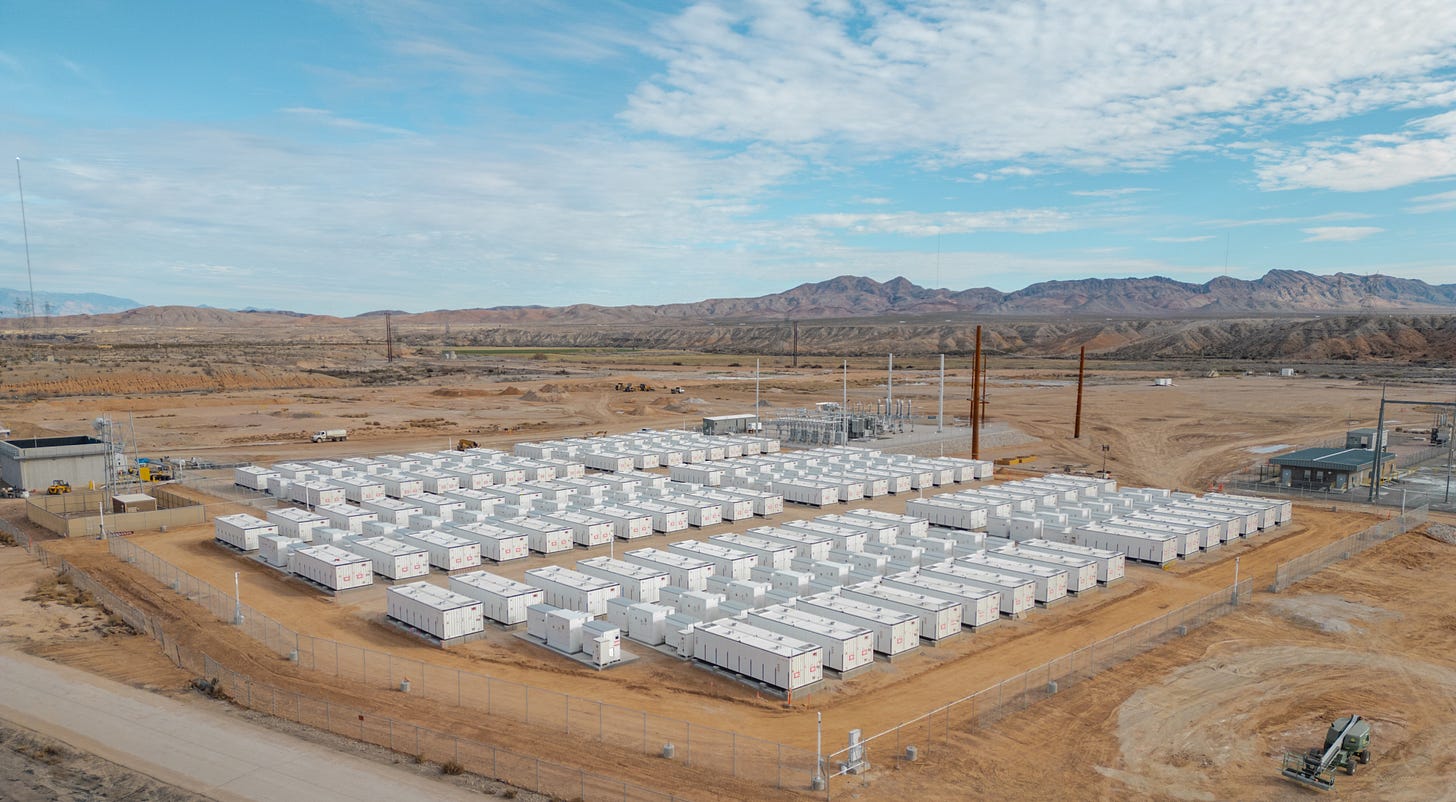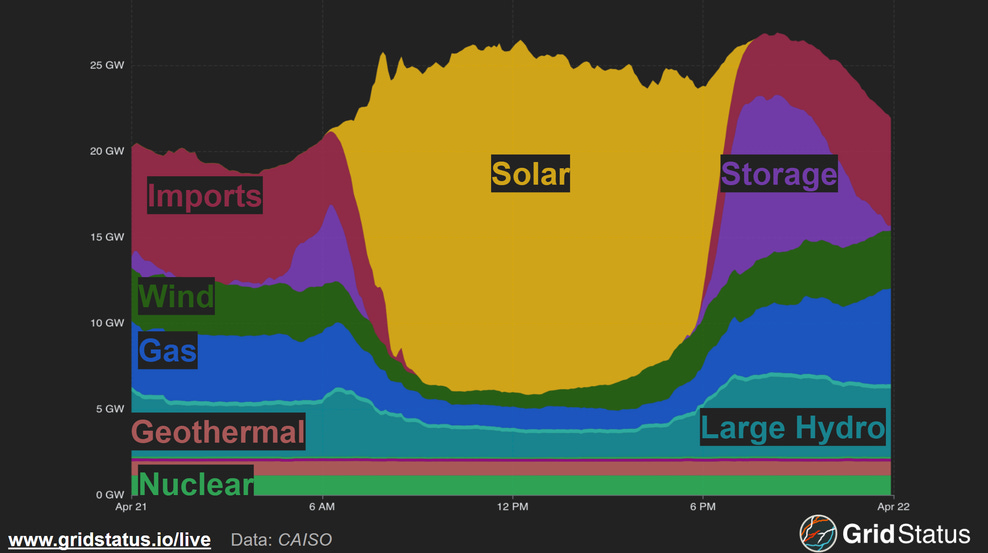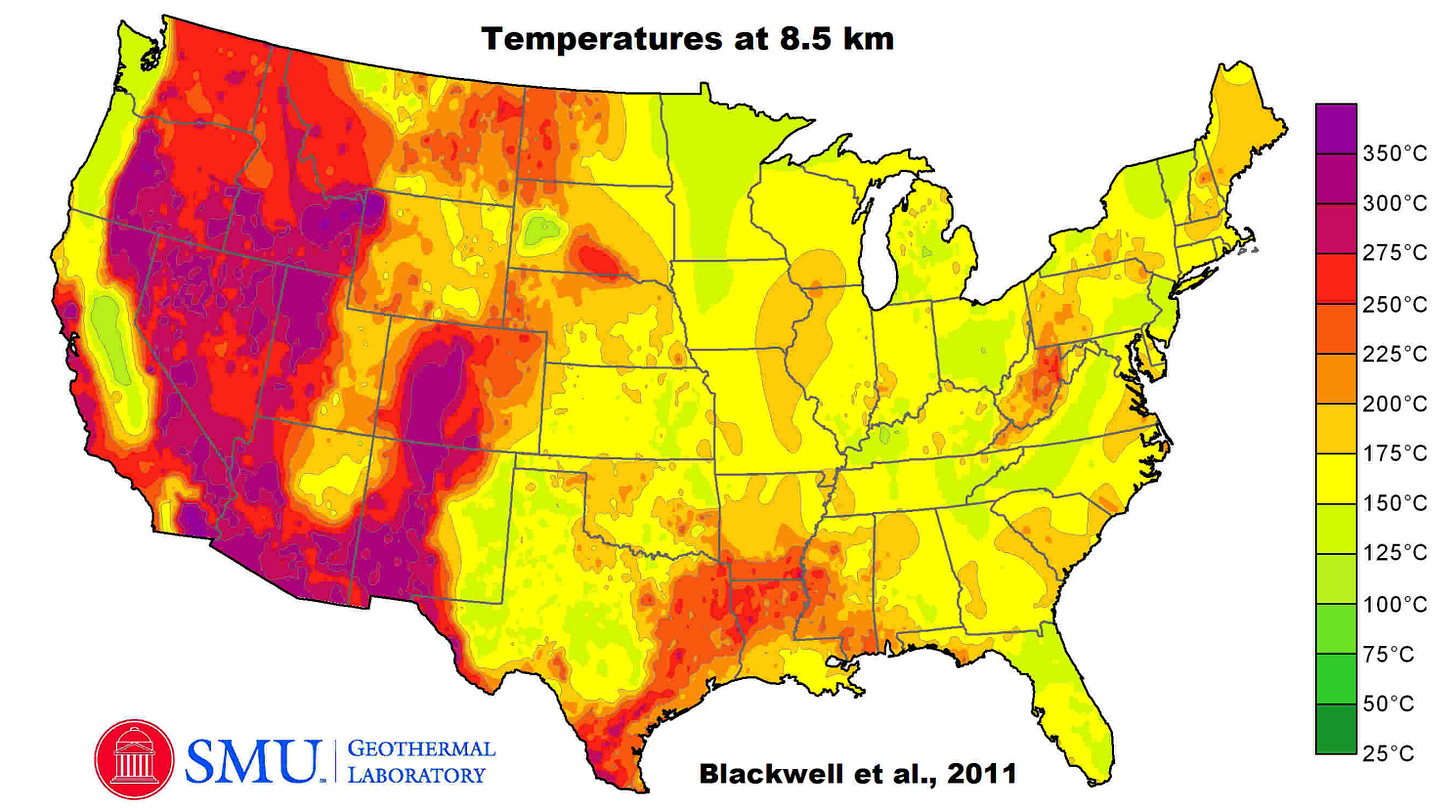24/7 Renewable Energy Is Almost Here
Intermittency Is Increasingly a Solved Problem
Renewable energy technologies face numerous criticisms.
And most of them are lies. Wind turbines cause cancer and endanger the survival of bird species. Offshore wind farms kill whales. Solar panels drain the sun, leak toxic chemicals, and cannot be recycled. Renewables are ruinously expensive, and their adoption will bankrupt the world. These are just some of the untruths levelled by fossil fuel-funded misinformation merchants.
However, there is one meaningful, legitimate critique of wind and solar energy that cannot be summarily dismissed: their intermittency. Solar panels do not produce electricity at night, and wind turbines do not produce electricity when the wind is not blowing.
This intermittent nature does not - as some argue - make wind and solar “unreliable” (humans have been able to reliably predict sunrises since Sumerian times, and our wind forecasts are pretty good too). However, it does create challenges in matching renewable generation’s fluctuating electricity supply with 24/7 electricity demand.
At low penetration rates, this problem hardly matters. There is a demand peak during the day, which solar is well-suited to absorb. Grid operators can easily balance small amounts of variable resources by importing excess electricity from elsewhere or spinning up a fossil gas peaker plant. There is also a small balancing effect between renewables, as solar generates during the day, and winds tend to be stronger at night.
But the more wind and solar are added to the grid, the harder it becomes to match supply with demand. To reach penetration levels needed to meaningfully fight climate change and fully replace the fossil fuel energy system, a revolution is needed to “firm” wind and solar and transform them into truly 24/7 power sources.
Luckily, such a revolution is underway.
Intraday Batteries
The most straightforward solution for wind and solar intermittency is energy storage via batteries. Electricity generated by solar in the middle of the day, for example, can be stored in batteries and then discharged later that evening.
This practice is already a reality in mature solar markets like California, Spain, and Australia. As the chart below shows, storage makes up a sizable chunk of generation in early morning and late evening on California’s grid.
Batteries have helped the Golden State put more solar and wind onto its grid than it otherwise would have been able to do, furthering its decarbonization goals. And adoption has been supercharged by rapid price declines in Battery Energy Storage Systems (BESS), which include the costs of the batteries themselves and other necessary elements (fire suppression, cooling, inverters, etc.).
BESS costs averaged $165 per kWh at the end of last year - an astounding 40 percent decline from the previous year.1 The cost of battery storage has been falling like a piece of iron ore thanks to lithium-iron-phosphate (LFP) batteries, which use less costly ferrous materials than the once standard lithium-nickel-manganese-cobalt (NMC) chemistry.
LFP has become dominant in grid storage applications and in lower-end electric vehicles. Nearly all new solar projects in the United States now have storage attached, and battery capacity additions should reach 60 percent of solar additions this year (see above).2
Multi-day Storage
The next step in the storage journey will be extending intraday storage into multi-day storage, which will require a less expensive battery as costs are amortized over fewer charging cycles. LFP may, in time, become cheap enough for this use. But there are nevertheless a suite of next-generation technologies competing to become even cheaper.
Sodium-ion is among the most promising. Sodium-ion chemistry swaps out the lithium in lithium-ion chemistries for much less costly sodium (basically, table salt). Sodium-ion batteries are less energy dense than LFP. But they are also less prone to fire, creating cost savings on the fire suppression elements of a full battery system.3 Sodium-ion batteries also use much of the same manufacturing process as existing lithium-ion tech, which means the technology may be simpler to scale relative to its competitors.
Other more exotic chemistries are also being pursued. Last year Form Energy of Massachusetts started shipping an iron-air battery marketed as a solution for 100-hour storage. New Jersey-based Eos Energy is selling a zinc-bromine battery which - like LFP - is currently only economic in intraday use, but could scale towards multi-day use over time. Research into other chemistries like lithium sulfur, zinc-ion, flow batteries, and various solid-state contenders continues apace. Any one may surprise with a breakthrough in the medium term.
Some companies are looking beyond electrochemical batteries to even simpler energy storage solutions. Italian startup Energy Dome is developing technology that essentially amounts to a giant balloon pumped full of air by renewable electricity. It is subsequently discharged to run a turbine, converting the compressed air back into electricity. The round-trip efficiency is lower than for batteries, but this is partly compensated by comparatively lower materials costs.4
Another approach is thermal storage, in which energy is stored as heat. Finland recently inaugurated a sand battery - a big silo of sand heated with renewable electricity, which then discharges slowly over time to heat homes.5 There’s even a company - Swiss-based Energy Vault - dedicated to “gravity storage” - i.e. raising and then dropping concrete bricks off a bespoke tower.
One missing piece of the puzzle at present is seasonal energy storage - for example, the shifting of solar generation from summer to winter. In the tropics this is not vital as solar resource does not exhibit much seasonal variation. But at temperate latitudes, the seasonal variations in solar become more pronounced. Germany typically produces ten times more solar energy in June than in December. The equivalent figure in Spain is closer to three times, Australia two and a half, and the US closer to two.
It would be enormously useful to be able to shift some of summer’s solar generation by three to six months into the fall and winter. But the only extant solution for seasonal storage is pumped hydro, which involves the creation of a hydroelectric dam and reservoir fed by pumps. Such installations require a specific geography, but may yet play a role in future. Much-maligned hydrogen could be an option as well, though seasonal hydrogen storage is presently far too costly for commercialization.
Demand Response & VPPs
Another more viable way to mitigate the intermittency problem is to shift energy demand rather than supply. Prototypical examples of this “demand response” would be using a smart thermostat to cool a home before peak demand arrives or charging an electric vehicle (EV) late at night rather than in the evening.
Demand response works even better when paired with distributed generation in what is known as a Virtual Power Plant (VPP). VPPs combine a large number of distributed energy resources such as solar panels, home batteries, and EV batteries, along with demand response functions into a single integrated system which can provide power to the grid.
Both Tesla and Sunrun operate VPPs in California and they have each been wildly successful. In a test last month, they delivered 535 MW of power to California’s grid, which is about half the capacity of a typical nuclear reactor.6
VPPs are a relatively new technology, but the potential is enormous. Huge amounts of value can be unlocked within distributed assets by dynamically controlling both electricity supply and demand - all without the expense of building new centralized generation or transmission.
Geothermal
In addition to storage and VPPs, there is a third way to mitigate the intermittency problem: reduce the share of intermittent resources on the grid by increasing the share of clean, firm generation. Low-carbon, 24/7 electricity is currently produced by three sources: hydroelectric, nuclear, and geothermal. Hydro resource is mostly tapped out, as the most promising sites have already been dammed. Nuclear’s growth is constrained by astronomical costs, glacial construction times, and - in some places - political opposition.
That leaves geothermal. Geothermal generates electricity by tapping heat beneath the Earth’s surface. The power it provides is low-carbon, 24/7, and without seasonal variation. But its development has historically been hobbled by geography. Today it is economic only in places where heat is very near the surface - like Iceland, Kenya, Turkey, and parts of California.
However, the last decade has seen the emergence of Enhanced Geothermal Systems (EGS), which promise to dramatically expand the map by digging deeper for heat. Texas-based Fervo Energy is using fracking and horizontal drilling techniques originally developed by the oil and gas industry to coax heat out of rock up to and beyond 5 km deep. Fervo’s first commercial-scale project is under construction in Utah and has been fully permitted up to a colossal 2 GW of capacity.7
Such an approach may not be viable everywhere, as heat resource is closer to the surface in some places and further in others. But it does work in much of the United States (see map above) and in many other large countries like Germany, Japan, Italy, Turkey, and the Philippines.8 Other companies like Sage and Eavor are working on similar approaches.
Quaise - a startup spun out of MIT research - has an even more ambitious goal. It aims to use plasma torches to vaporize rock and dig the deepest holes ever dug - up to 20 km deep. If successful, this technology will allow it to access extremely hot temperatures for clean, 24/7 electricity generation anywhere on Earth.9
There are no commercial enhanced geothermal projects yet delivering power to the grid (the first - Fervo’s in Utah - is slated to start next year). But all indications are that EGS is set to be the third pillar of scalable renewable generation behind wind and solar.
Endgame
Tens of billions of dollars of investment are funding myriad solutions to renewable intermittency. They are all converging on the same challenge at once, each chipping away at the problem.
Some of the newer, more exotic technologies will no doubt flop. Energy Vault, for example, was once exclusively committed to its unusual gravity storage towers, but has since pivoted to developing conventional electrochemical battery storage projects (including the one pictured at the top of this article).
But it would be madness to bet that all of these technologies will fail and intermittency will remain an unresolved conundrum for decades to come, particularly as some of these solutions - like LFP batteries, enhanced geothermal, and VPPs - are already succeeding.
The 2030-2035 time frame should see a complete reordering of the global energy order, as cheaper storage and VPPs enable higher wind and solar penetration and new sources of 24/7 renewable generation like geothermal come online. The climate implications will be profound. Coal in India and China may come off the grid much faster than current forecasts predict. The same could be true with fossil gas in the United States.
Wind, solar, and geothermal are at the gates and intermittency is the last bulwark protecting fossil fuels from total renewable energy dominance.
That bulwark is about to crumble.






